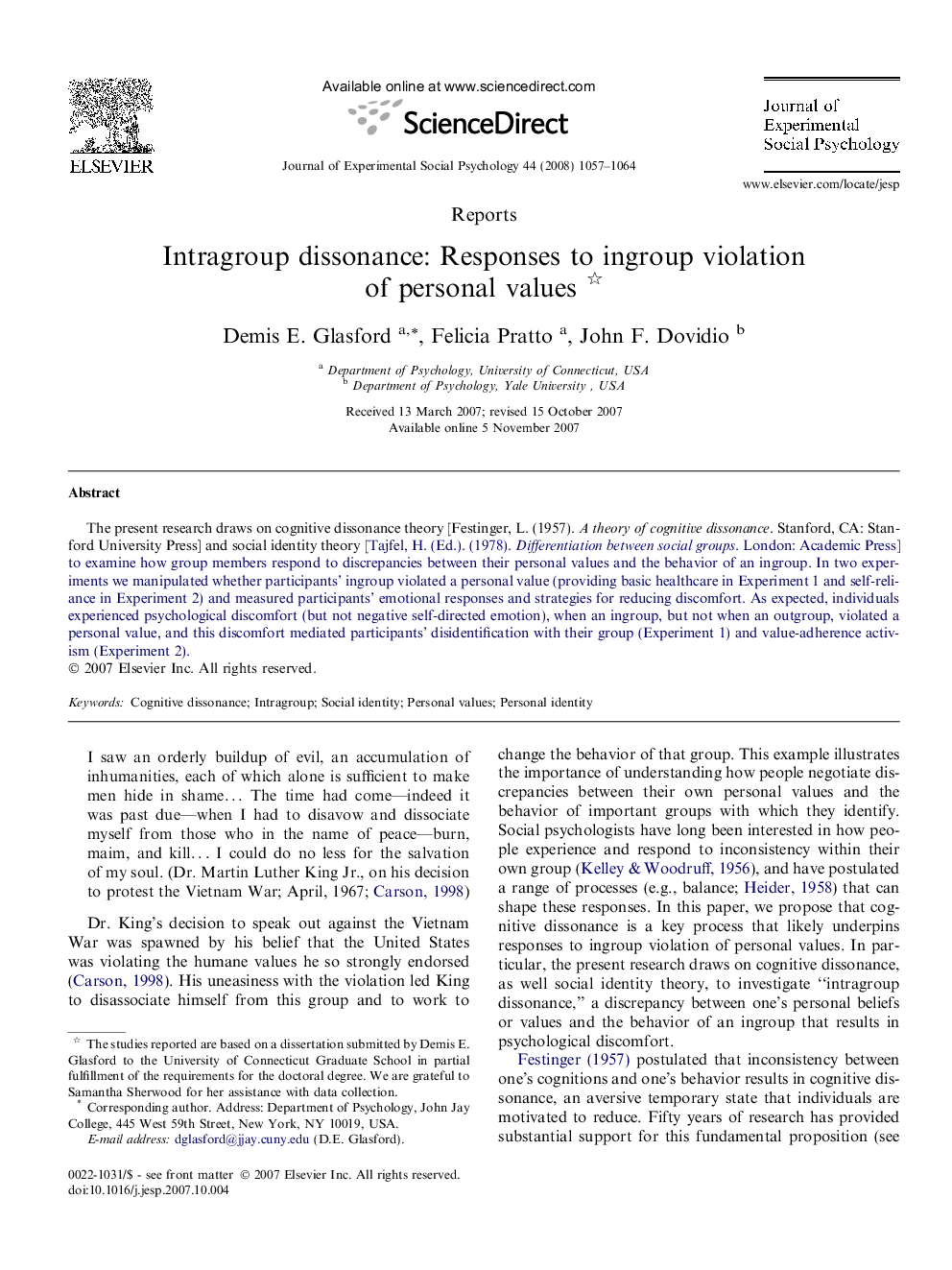| Article ID | Journal | Published Year | Pages | File Type |
|---|---|---|---|---|
| 10468619 | Journal of Experimental Social Psychology | 2008 | 8 Pages |
Abstract
The present research draws on cognitive dissonance theory [Festinger, L. (1957). A theory of cognitive dissonance. Stanford, CA: Stanford University Press] and social identity theory [Tajfel, H. (Ed.). (1978). Differentiation between social groups. London: Academic Press] to examine how group members respond to discrepancies between their personal values and the behavior of an ingroup. In two experiments we manipulated whether participants' ingroup violated a personal value (providing basic healthcare in Experiment 1 and self-reliance in Experiment 2) and measured participants' emotional responses and strategies for reducing discomfort. As expected, individuals experienced psychological discomfort (but not negative self-directed emotion), when an ingroup, but not when an outgroup, violated a personal value, and this discomfort mediated participants' disidentification with their group (Experiment 1) and value-adherence activism (Experiment 2).
Related Topics
Life Sciences
Neuroscience
Behavioral Neuroscience
Authors
Demis E. Glasford, Felicia Pratto, John F. Dovidio,
